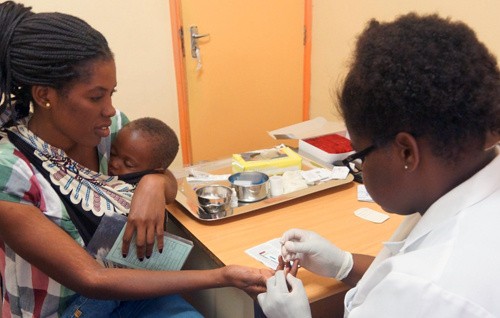
A new strain of HIV was recently discovered -- for the first time in 19 years.
According to the article published in the Journal of Acquired Immune Deficiency Syndromes published on Wednesday, the strain belongs to the Group M version of HIV-1, the same family of subtypes responsible for the vast majority of reported cases.
The last time scientists discovered a variant was in 2000.
Mary Rodgers, a principal scientist who co-authored the report, said that new strains can pose a "great challenge" on the diagnosis.
The New Strain
For a variant to be considered as a new strain, there must be at least three independent cases reported. According to Abbott Laboratories, which has conducted the study, they found this strain on three different persons. The first two were discovered in 1983 and 1990.
Rodgers said that the strains were "very unusual" as it was not similar to other strains.
The last one was discovered in 2000, while the group was researching how to stop the mother-to-child transmission. The strain looks similar to the previously discovered. However due to the inadequate amount of sample, the scientists are not confident with their findings, so they developed a new technique to study it further. In the following year, they were able to confirm the initial finding, and called it "Subtype L".
Rodgers compared the 2000 strain to a "needle in a haystack" and the new technology is like using a magnet to pull the needle out.
All samples are from the Democratic Republic of Congo, the same country where HIV was first detected in the mid-1980s.
Viruses are evolving
Anthony Fauci, director of the National Institute of Allergy and Infectious Disease, said that even if the current medical care provided for HIV patients is effective, new strains is a reminder that there are still more to know about the virus, including how it evolves.
The effect of the new variant is still unknown. Yet the scientists believe that there will be no need for new diagnosis or treatment. Current diagnostic tests and HIV-suppressing drugs will still work on this strain, assuming it spread.
New strains can reveal some unknown history, said HIV geneticist Brian Foley, from New Mexico's Los Alamos National Laboratory, the largest HIV gene bank in the world. He is not involved in the study.
For the HIV pandemic to end, "outthinking the viruses" and utilize our existing technologies and resources to monitor its evolution are what we should be doing, said Dr. Carole McArthur, also a co-author of the study who works as a professor in the department of oral and craniofacial sciences at the University of Missouri, Kansas City.
READ MORE: California is making anti-HIV drugs an OTC. Here's why.
Global Endeavor Against HIV
According to the 2018 global statistics, there are at least 37.9 million persons living with HIV (PLHIV). Most cases are from the South African region, but the Philippines the biggest HIV growth rate.
To combat this, the World Health Organization recently launched a campaign on promoting high-quality HIV services in less developed countries, especially in African countries.
Some states in the United States like California and New York City combat the pandemic by making the treatment more accessible.
READ MORE: Philippines Has the Biggest HIV Infection Growth Rate
© 2025 NatureWorldNews.com All rights reserved. Do not reproduce without permission.





